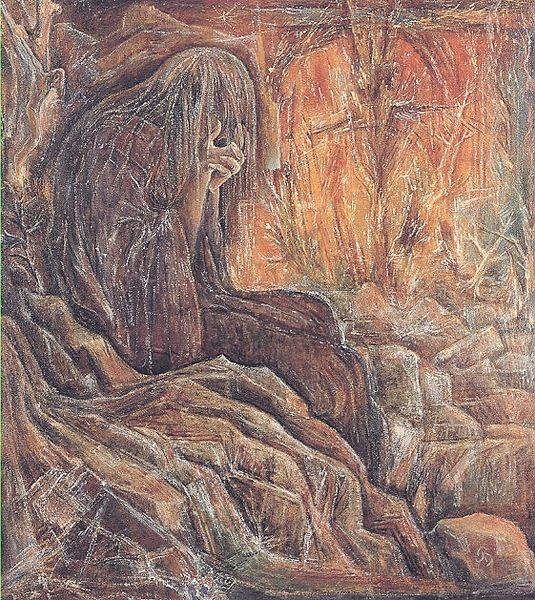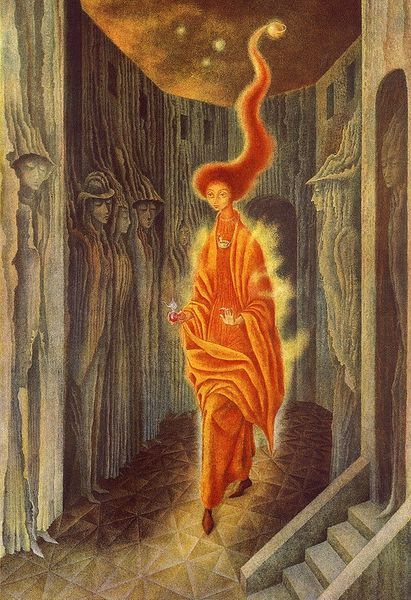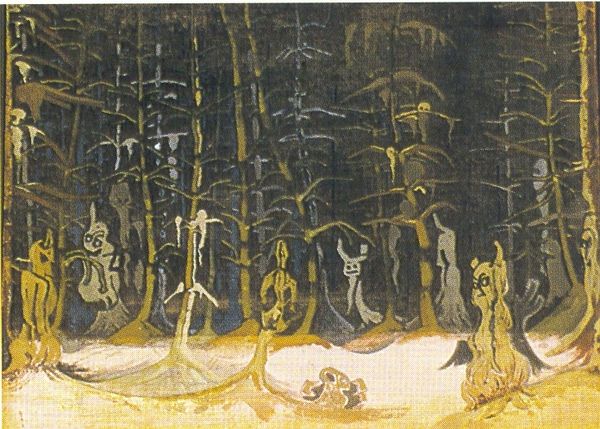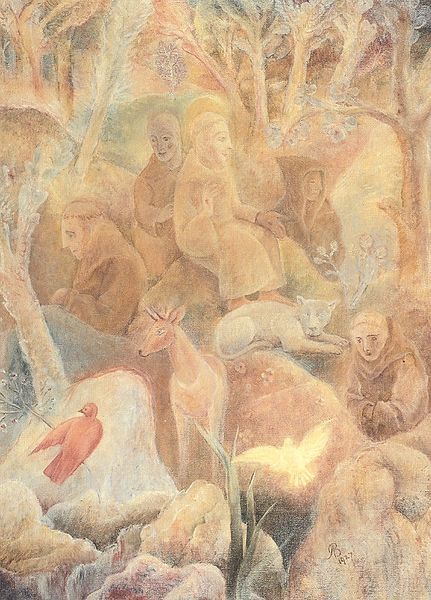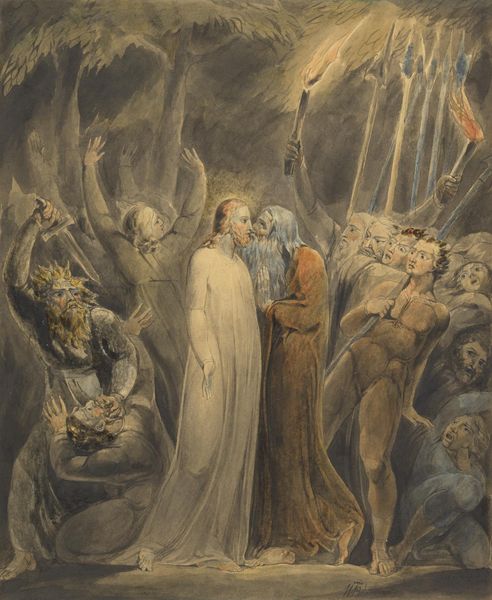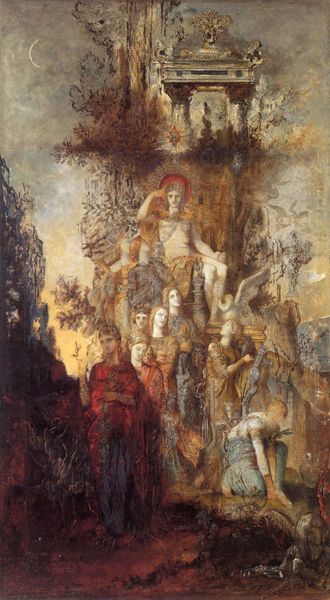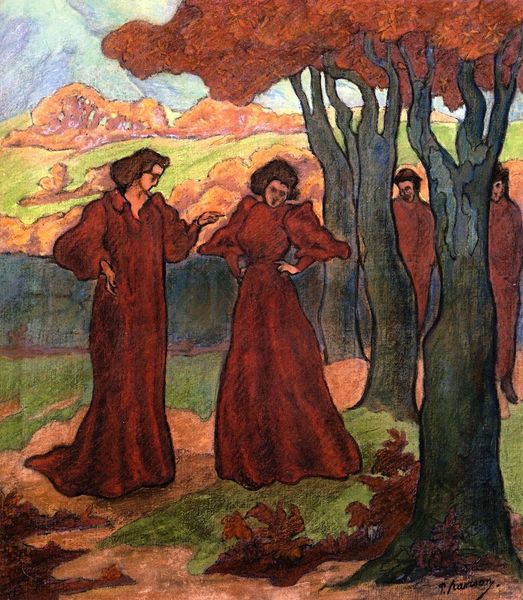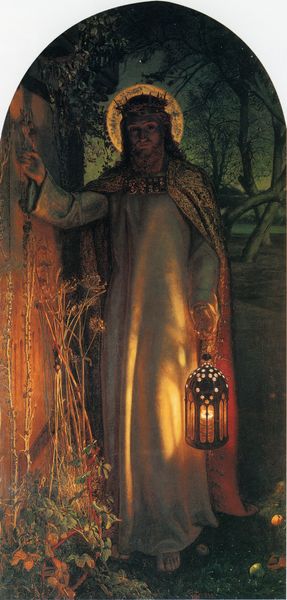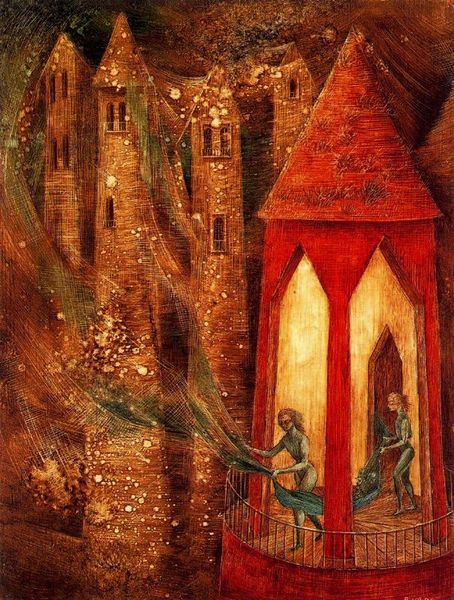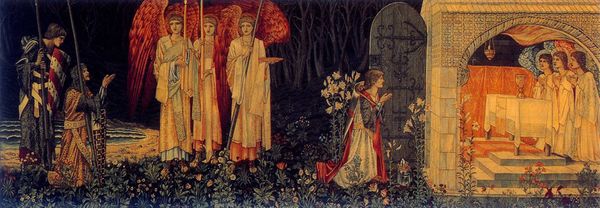
painting, oil-paint
#
painting
#
oil-paint
#
landscape
#
figuration
#
surrealism
Copyright: Remedios Varo,Fair Use
Curator: This is Remedios Varo's painting "Solar Music." What do you make of this at first glance? Editor: It feels immediately…sepia-toned, like looking at an antique photograph or a memory. I notice this figure centered with light seemingly emanating from her—illuminating flowers. It has a striking stage-lit quality in contrast to the wild textures that give an organic feel. Curator: Indeed. Varo often infused her surreal landscapes with symbolic meaning. Here, we have a figure conducting solar energy, potentially life force through what looks like a forest setting, wouldn't you say it almost harkens back to the romantic idea of artists engaging nature's elements as source. Editor: Absolutely. The oil paint application seems painstakingly deliberate. Look at the texture, particularly in the foliage and on the figure’s robes. It's so meticulously crafted, one can imagine how consuming it was to create, so many fine textures layered to construct volume. Is the texture simply descriptive or allegorical, an element of what one consumes as nature's harvest? Curator: I believe that precise texture builds meaning, especially when considering Varo’s fascination with alchemy and the hidden correspondences in nature. The act of conducting music via light may signal accessing divine knowledge and creative process, doesn't it point towards transformation? Editor: I agree—an active transmutation! Is the sunlight she summons nourishing nature and revealing the creative work that underpins materiality? It suggests a constant flow, a vitalism. In a way she, a conductor is material too, composed of light-harvest and dressed by the fruits of her labour, bound to this landscape that she cultivates. I’m curious about her social context, the cultural and ecological history, and if Varo ever elaborated her interest in labour. Curator: Considering her flight from Europe and arrival in Mexico, these landscapes likely took a deeply personal character, didn't they? Not merely reflecting a setting, but reflecting a world of being uprooted and reimagining one's relationship with the world as well. She makes me recall Italo Calvino, speaking about lightening as subtraction and seeking lightness. The figure's purpose might not be merely to illuminate but to subtract something from our perceptions. Editor: The interplay between materiality, craft, the figure, the work and process that is so deliberately expressed certainly warrants further consideration. Curator: Precisely, it is through her precise visual vocabulary of symbols that Varo compels to discover personal meanings and archetypal connections,

